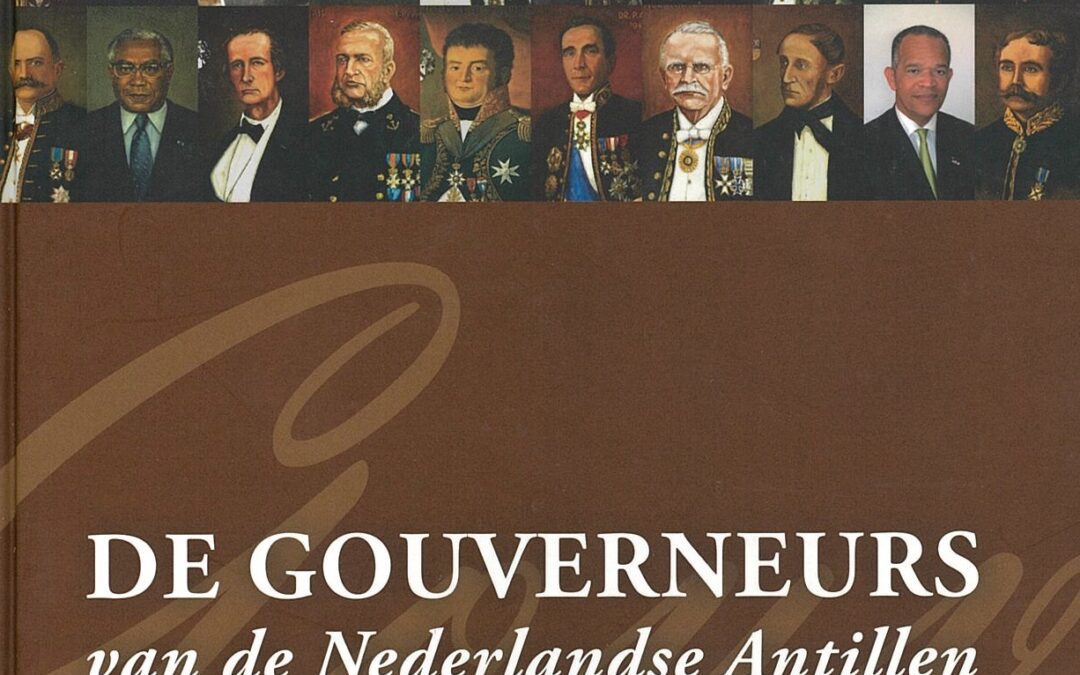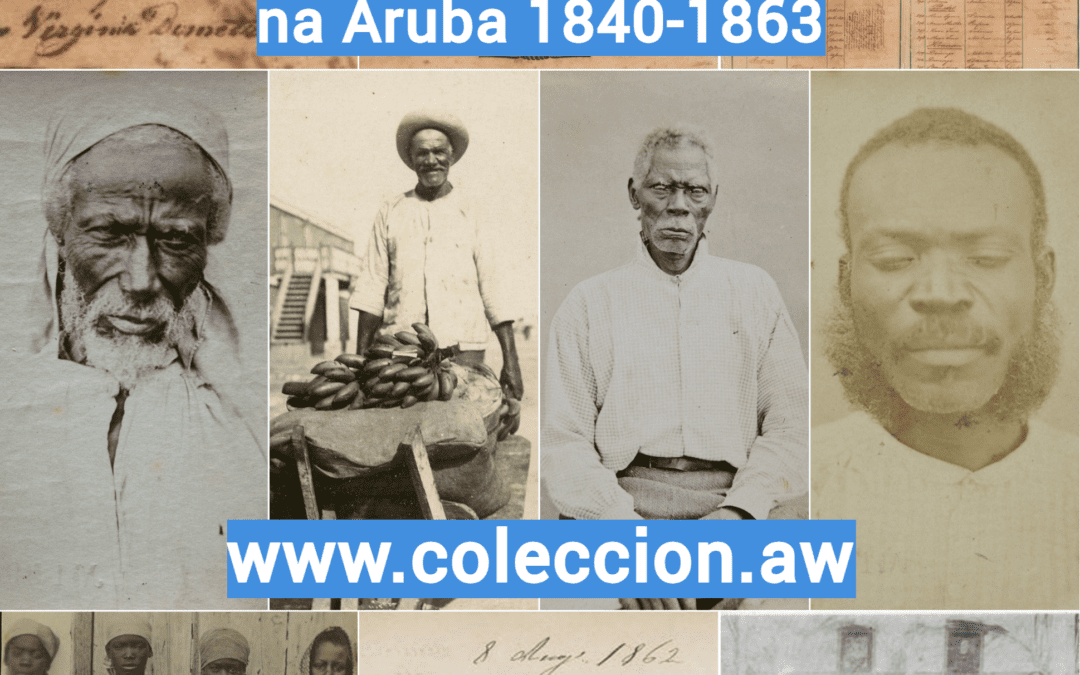
Mar 26, 2025
Met de opheffing van het land de Nederlandse Antillen verdwijnt ook het ambt van gouverneur van de Nederlandse Antillen, een ambt dat in de afgelopen twee eeuwen van grote betekenis is geweest voor de zes eilanden en het Koninkrijk. Dit boek biedt een portrettengalerij van de dertig mannen die sinds 1815 het Koninkrijk als gouverneur dienden. Van iedere gouverneur – Nederlanders tot 1962, sindsdien Antillianen – wordt de levensloop geschetst, met nadruk op de ambtsperiode; het ambtsportret completeert de biografie. De levensschetsen geven een beeld van de (post)koloniale verhoudingen en de ontwikkelingen op de eilanden, maar bieden vooral informatie over achtergrond, macht en onmacht, visie en functioneren van de gouverneurs. In de inleiding worden de ontwikkelingen van het ambt en van het profiel van de gouverneur geschetst tegen de achtergrond van de staatkundige ontwikkeling van de Antillen: van kolonie via autonoom land binnen het Koninkrijk der Nederland tot de eindfase, waarin het land uiteenviel in zes eilanden met elk een eigen staatkundige positie binnen het Koninkrijk. Een kunsthistorische toelichting op de geschilderde portrettengalerij besluit het boek.
‘De gouverneurs van de Nederlandse Antillen’ werd geschreven in opdracht van het Kabinet van de Gouverneur van de Nederlandse Antillen. Vier historici – Aart G. Broek, Ronald Donk, Wim Renkema en Dirk J. Tang – schreven de portretten, kunsthistorica Renske van der Zee belichtte de schilderijen. Gert Oostindie leidde het project en tekende voor de inleiding. Hij is directeur van het Koninklijk Instituut voor Taal-, Land- en Volkenkunde te Leiden.
Inhoudsopgave
De gouverneurs van de Nederlandse Antillen: taken, omgeving en profiel sinds 1815
Gert Oostindie ….. 11
Slavernij en koloniale experimenten, 1815- 1866
Wim Renkema ….. 25
A.Kikkert, 1816- 1819 ….. 27
P.R Cantz’laar, 1820- 1828 ….. 33
I.J Rammelman Elsevier sr., 1828- 1836 ….. 39
R.F van Raders, 1836- 1845 ….. 45
R.H. Esser, 1845- 1848 …… 51
I.J Rammelman Elsevier jr., 1848- 1854 ….. 57
R.F.C. van Lansberge, 1856- 1859 ….. 65
J.D. Crol, 1859- 1866 ….. 73
Dood tij, 1866- 1919
Ronald Donk ….. 79
A.M. de Rouville, 1866- 1870 ….. 81
H.F.G. Wagner, 1870- 1877 ….. 87
H.B. Kip, 1877- 1880 ….. 93
J.H.A.W. van Heerdt tot Eversberg, 1880- 1882 ….. 99
N. van den Brandhof, 1882- 1890 ….. 105
Ch. A. H. Barge, 1890- 1901 ….. 111
J.O. de Jong van Beek en Donk ….. 117
Th. I.A. Nuyens, 1909- 1919
Modernisering, 1919- 1951
Dirk. J. Tang ….. 129
O.L. Helfrich, 1919- 1921 ….. 131
N.J.L. Brantjes, 1921- 1928 ….. 137
L.A. Fruytrier, 1929-1929 ….. 143
B.W.Th. van Slobbe,1929- 1936 ….. 149
G.J.J. Wouters,1936- 1942 ….. 155
P.A. Kasteel, 1942- 1948 ….. 161
L.A.H. Peters, 1948- 1951 ….. 169
Statutaire Autonomie
Aart G. Broek ….. 175
A.A.M. Struycken, 1951- 1956 ….. 177
A.B. Speekenbrink, 1957- 1961 ….. 183
N. Debrot, 1962- 1970 ….. 189
B.M. Leito, 1970- 1983 ….. 195
R.A. Römer, 1983- 1990 ….. 201
J.M. Saleh, 1990- 2002 ….. 207
F.M.d.l.S, Goedgedrag, 2002- 2010 ….. 213
De geschilderde gouverneursportretten
Renske van der Zee ….. 219
Technische gegevens ….. 227
Bibliografie ….. 229
Personenregister ….. 243
Verantwoording en dankwoord ….. 248
Over de auteurs ….. 249

Jan 23, 2025
This video is part of a series of three informative historical videos/ slideshows about the Dutch West Indies, which consist of Aruba, Bonaire, Curaçao, Sint Maarten, Sint Eustatius, Saba, and Suriname.
Dutch West Indies 1630-1975 Part II : Pirates & Slaves
Dutch trading posts and plantations in the Americas precede the much wider known colonisation activities of the Dutch in Asia. Whereas the first Dutch fort in Asia was built in 1600 (in present-day Indonesia), the first forts and settlements on the Essequibo river in Guyana and on the Amazon date from the 1590s. Actual colonization, with Dutch settling in the new lands, was not as common as with other European nations. Many of the Dutch settlements were lost or abandoned by the end of that century, but the Netherlands managed to retain possession of Suriname until it gained independence in 1975, as well as the former Netherlands Antilles, of which the islands remain within the Kingdom of the Netherlands today.

Jan 23, 2025
This video is part of a series of three informative historical videos/ slideshows about the Dutch West Indies, which consist of Aruba, Bonaire, Curaçao, Sint Maarten, Sint Eustatius, Saba, and Suriname.”
Dutch West Indies 1630-1975 Part III: Decolonization and the independence of Suriname
Dutch trading posts and plantations in the Americas precede the much wider known colonisation activities of the Dutch in Asia. Whereas the first Dutch fort in Asia was built in 1600 (in present-day Indonesia), the first forts and settlements on the Essequibo river in Guyana and on the Amazon date from the 1590s. Actual colonization, with Dutch settling in the new lands, was not as common as with other European nations. Many of the Dutch settlements were lost or abandoned by the end of that century, but the Netherlands managed to retain possession of Suriname until it gained independence in 1975, as well as the former Netherlands Antilles, of which the islands remain within the Kingdom of the Netherlands today.

Jan 23, 2025
This video is part of a series of three informative historical videos/ slideshows about the Dutch West Indies, which consist of Aruba, Bonaire, Curaçao, Sint Maarten, Sint Eustatius, Saba, and Suriname.
Dutch West Indies 1630-1975 Part I: The Dutch West India Company
Dutch trading posts and plantations in the Americas precede the much wider known colonization activities of the Dutch in Asia. Whereas the first Dutch fort in Asia was built in 1600 (in present-day Indonesia), the first forts and settlements on the Essequibo river in Guyana and on the Amazon date from the 1590s. Actual colonization, with Dutch settling in the new lands, was not as common as with other European nations. Many of the Dutch settlements were lost or abandoned by the end of that century, but the Netherlands managed to retain possession of Suriname until it gained independence in 1975, as well as the former Netherlands Antilles, of which the islands remain within the Kingdom of the Netherlands today.

Dec 6, 2024
Busca den e Database di Personanan Sclavisa na Aruba 1840-1863
Zoek in de Database van Tot slaaf gemaakte personen in Aruba 1840-1863
Search the Database of Enslaved People in Aruba 1840-1863
Bo persona ta busca informacion tocante un familiar cu tabata catibo entre aña 1840 y 1863 na Aruba?
E documento aki ta yuda bo busca.
E registro di esclavo di Aruba no ta existi mas, pero door cu a mantene e informacion di diferente archivo tocante persona den sclavitud, por a traha un bista mas completo posibel di e Arubianonan sclavisa entre aña 1840 y 1863.
Tips pa ora di busca:
- E personanan sclavisa tabata tin solamente un nomber. Nan ta haya un fam te ora cu nan haya nan libertad. Esey a sosode ora cu a aboli sclavitud (e Emancipacion) riba 1 di juli 1863 of pa medio di manumision en caso cu nan a haya nan libertad prome cu 1 di juli 1863. Si bo busca pa medio di fam, e ora bo lo wak e personanan cu a haya nan libertad. Si sigui busca lo por haya nomber bieu (“nomber di catibo”) combina cu nomber di mama of nomber di e shon anterior.
- Cu e nomber di mama por sigui busca otro miembro di famia, door cu no a registra paternidad, bo por busca solamente den e liña femenino.
- Tene na cuenta cu den e fuentenan historico a pronuncia e mesun nomber na diferente manera. Pues, pa siguransa purba diferente variante di ortografia.
- Ademas, por busca riba nomber di Plantage (manera Mon Plaisir, Santa Martha, Balashi, of Daimari), nomber di otro isla, colonia of pais (Curaçao, Bonaire, St. Eustatius, Suriname, Venezuela, Puerto Rico); riba profesion/trabou (pa ehempel cunukero, labadora, sirbiente) y riba tipo di socedido (nacemento, fayecimento, benta, findishi, importa, exporta, manumision, emancipacion) y riba hopi nomber y informacion/termino mas.
Tokante Coleccion Aruba:
Na october di aña 2022, Archivo Nacional, Biblioteca Nacional y UNOCA a firma un acuerdo pa coopera riba e tereno di digitalisacion di e historia, cultura y herencia di Aruba.
E intencion ta pa traha riba un plataforma unda e herencia cultural digital di Aruba ta bira facilmente accesibel. Por mira e resultado di e cooperacion aki den e siguiente portal: https://coleccion.aw.
Segun cu e lunanan a pasa, mas organisacion a uni na Coleccion Aruba. Pa asina comparti nan conocemento, experticio y nan herencia cultural digitalisa dentro di e portal coleccion.aw.
Dia 28 di september 2023 a lansa coleccion.aw oficialmente.


![SMC002-FD-LOGO-500px-[ANI]](https://dutchcaribbeanheritage.org/files/2024/04/SMC002-FD-LOGO-500px-ANI.gif)


